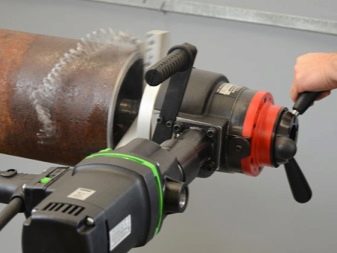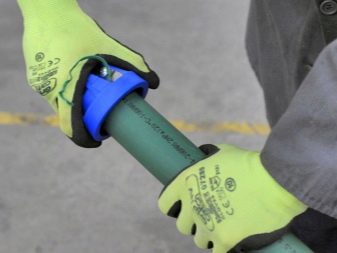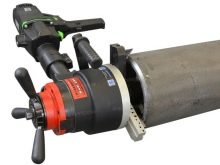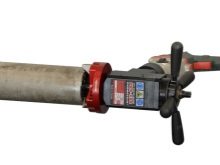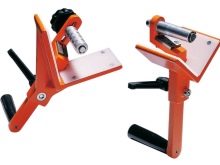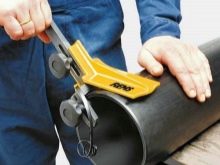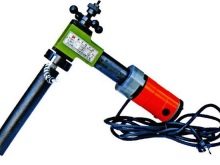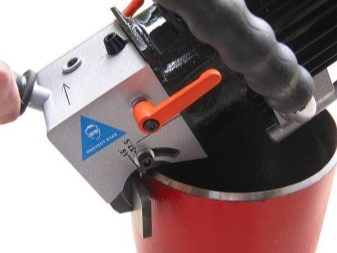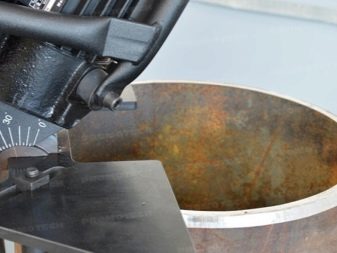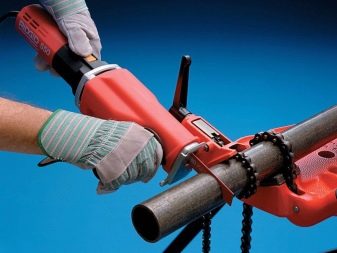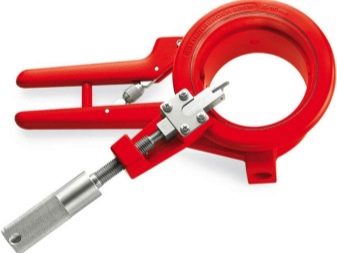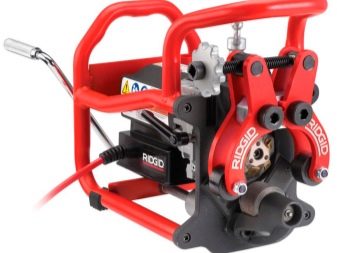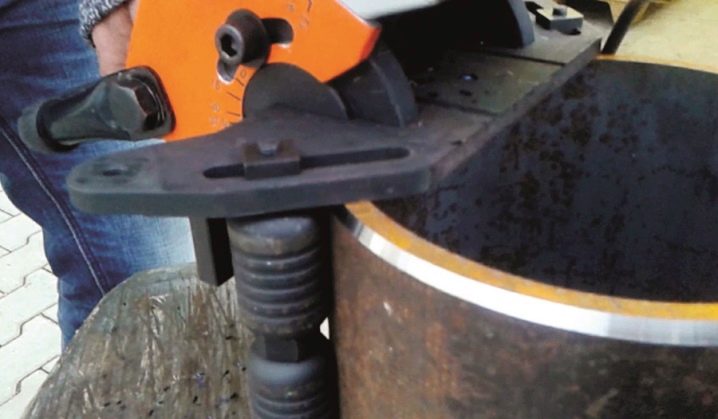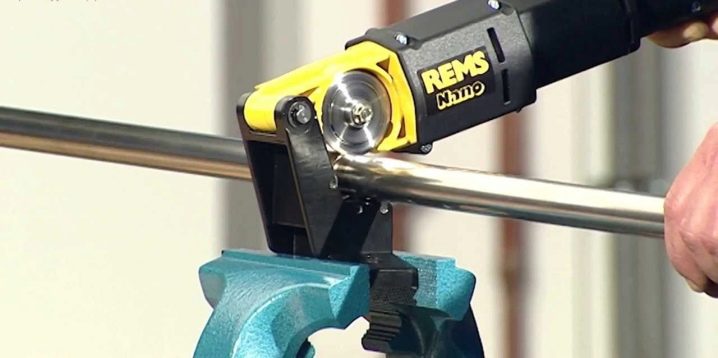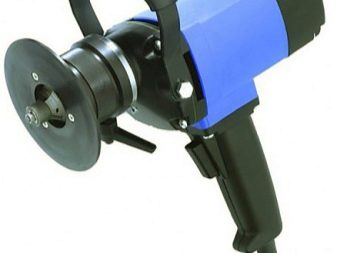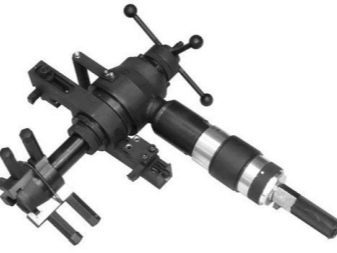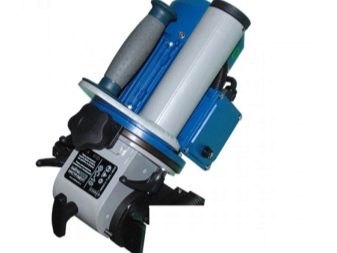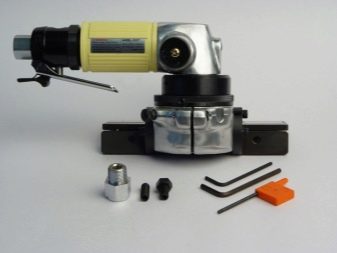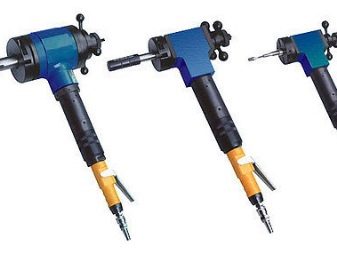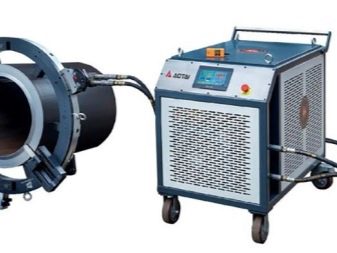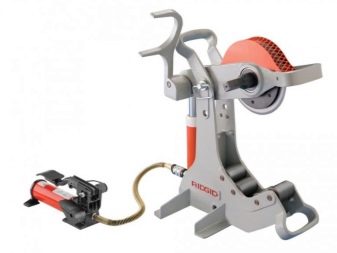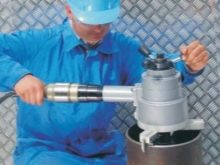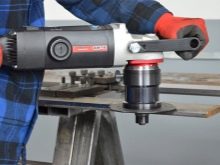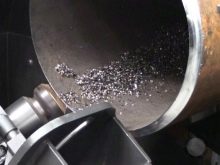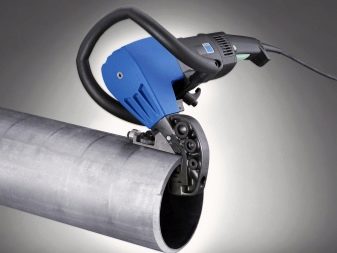Steel pipe catcher: how to choose and use?
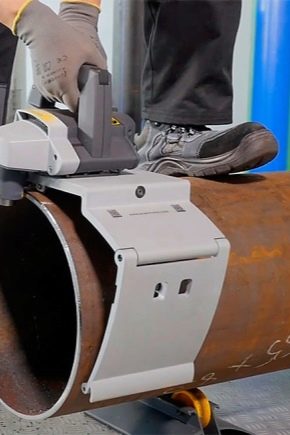
Reinforcement for metal and plastic pipes is a necessary tool used during welding and installation with flanges and fittings. Of course, you can trim through the use of a hacksaw for metal, but it will be a more labor-intensive process, so it is more practical to purchase a special unit that will speed up and facilitate the cutting of pipe material.
Purpose
The chaser is a special equipment that can perform several functions at once.
For pipe products, it is used for the following operations:
- helps to cut pipes from various types of steel;
- aligns the ends as accurately as possible;
- removes chamfer on the edge of the material;
- smoothes metal surface roughness;
- calibrates metal pipes.
A feature of such models is:
- equipment pneumatic, hydraulic or electric;
- low weight and mobility;
- installation inside the tubes with automatic alignment and alignment;
- the presence of trimming parts of durable materials, in particular, cutters made of high-speed steel.
The grabber is an indispensable tool when you need an accurate installation of a metal-plastic pipe in the fitting without damaging the sealing internal gaskets. Regarding steel pipes, they are more than others require careful processing before welding, so you need to be well aware of which tool is suitable for this.
Species
Since the edge cutters can be made specifically for cutting metal, polyethylene and plastic, and also differ in the type of drive, all existing mechanisms should be considered in order to choose the best option.
Based on the complexity of the work, the devices are divided into:
- manual (simple and electric);
- pneumatic type mechanisms;
- devices with hydraulic drive.
Any equipment is equipped with elements for cutting, it can be:
- Tools consisting of several rollers, which are able to process pipes with a cross section from 50 to 100 mm, the minus of which is insufficient cleaning of the surface from burrs.
- Devices with the presence of an iron cage of incisors - with the help of such models it is possible to cut thin-walled steel pipes, for a greater thickness more durable trimming parts are required.
- Models that operate on the principle of a chain saw, equipped with a tensioning mechanism, chains and a swivel lever, the use of such devices provides a clear and smooth cut, ready for welding.
- Rotary pipe cutters work with rollers mounted around the pipe, cutting can be done in difficult conditions and provides high quality processing.
It is necessary to acquire a suitable modification, starting from the size of tubular products and special requirements for working conditions.
Manual
The simplest hand tools are simply fixed on the required area, and after several turns you can get a clear cut, of course, this mechanism will not work for a large amount of work and an electrical device will be required, which has several advantages.
An electric hand-held fascumulator is a chamfering device in the holes and from the surface. It can be used to work with different metals - non-ferrous, steel and cast iron. The portable model handles both straight and radius chamfers.
The main advantages of the models:
- Compactness - the unit is easy to handle and carry, thanks to a special case, and in terms of its performance it is just as effective as the heavier, larger devices.
- The simple management allowing to make work qualitatively without special preparation.
- Profitability of an expense of the electric power, unlike stationary equipment.
- The ability to perform work from different angles.
- Convenience due to the absence of vibration, thanks to special handles and rubberized coating.
- Another advantage is the affordable cost of the tool.
Disadvantages apply to some models only:
- during the work it is necessary to fix the processed material or the tool itself;
- lower productivity, in contrast to face-cutting machines;
- sometimes additional processing is required before welding.
In most cases, miniature modifications are preferable, since they can even process thin metal sheets with a thickness of 1.5 mm and holes with a diameter of 4 cm. Its size is about 60 cm, while the power is 2200 W.
When choosing such equipment, it is also necessary to pay attention to its speed (10 m / min), chamfer width (up to 20 mm), diameter radii (R3, R4, R5).
The most popular electric manual models include: Polish manual faskorez VM-20, German portable model EKF-300/450, domestic analogues - FS-10 (only for sheet metal) and "Mongoose" (only for pipes). Ridgid products also have excellent performance.
Other types of device
In addition to hand tools, there is professional equipment that guarantees high accuracy and quality of processing. Consider all the varieties in detail.
Pneumatic models capable of finishing pipes of different diameters and thicknesses. But this is not their only advantage - with the help of such devices you can make a bore before welding, use the technique with a small room space. At the same time, they have high power, which is applicable to increased loads.
Such edgers are often used when there is no supply of electric current or there is a threat of damage to the cable. Of the minuses, you can highlight the need for a compressor or other source of compressed air, as well as a lot of weight, because of which the units cannot be used in everyday life.
Hydraulically driven pipe cutters operating by pumping water and arising pressure on the piston are more powerful than simple hand tools. They do not need to be connected to the power grid, and this is an advantage, but for household work, it is better not to purchase such equipment, but to rent it.
The most demanded pneumatics is the NT1738M device used for machining pipes with an internal diameter of 60 to 102 mm, and TT-80 for internal and external chamfering of pipes.
Undoubtedly, in the presence of electricity it is better to use models with an electric drive, in other cases other types of equipment can be used.
Features of work with the tool
Face cutters are necessary for the connection of water pipes made of metal-plastic to face the pipe and for the chamfer, otherwise it will be difficult to achieve tightness of the seam.
For a clean perpendicular cut, a conventional roller pipe cutter may be suitable. It is much easier to use than scissors. The tool is rotated, every two turns increasing the depth of penetration, and so on until a separation of the product occurs.
To remove the edges from metal pipes, the following procedure should be followed:
- fascorez is fastened to the sheet metal with the help of clips; if it is a pipe, it is fastened to its inner side;
- then you need to set the desired angle of sharpening;
- the mechanism is turned on, the crown with cutters is fed to the metal product and the edge is cut, after which the material is considered prepared for the welding process.
When welding with steel pipes, quite often the seams are uneven, therefore a smoothing tool is used to smooth them.
Recommendations for selection
Due to the fact that the range of these products is quite wide, it is necessary to choose equipment especially carefully.
Beginners can advise:
- First of all, to decide on the scope of work, it may be more profitable to get by with the manual option.
- Of great importance is the power of the unit, good parameters are portable electric models that may be suitable for use in everyday life.
- For steel should choose equipment with high power.
- If you need a model for rolled tubes and sheet steel, attention should be paid to the presence of both functions combined in some devices.
Of course, a universal face picker, suitable for different materials, doing it cleanly and quickly, as well as capable of working qualitatively in different conditions, cannot have a low price - but with such a purchase, the owner will be spared many problems.
Review of the FS-22-M facoskimnitel with the FTS device, see the next video.

